
The cost to paint the interior of a house in Chicago, IL depends on size, layout, type of surface, and more. Learn what factors can influence your total in this guide.
Stay trendy but true to your style


Painting your interior walls is one of the easiest ways to freshen up your living space and increase your property value. Unfortunately, it’s easy to get overwhelmed by the hundreds of options as you stare at paint swatch colors at your local home improvement store. Use these popular paint colors for some inspiration and to make sure your home remains modern and trendy.
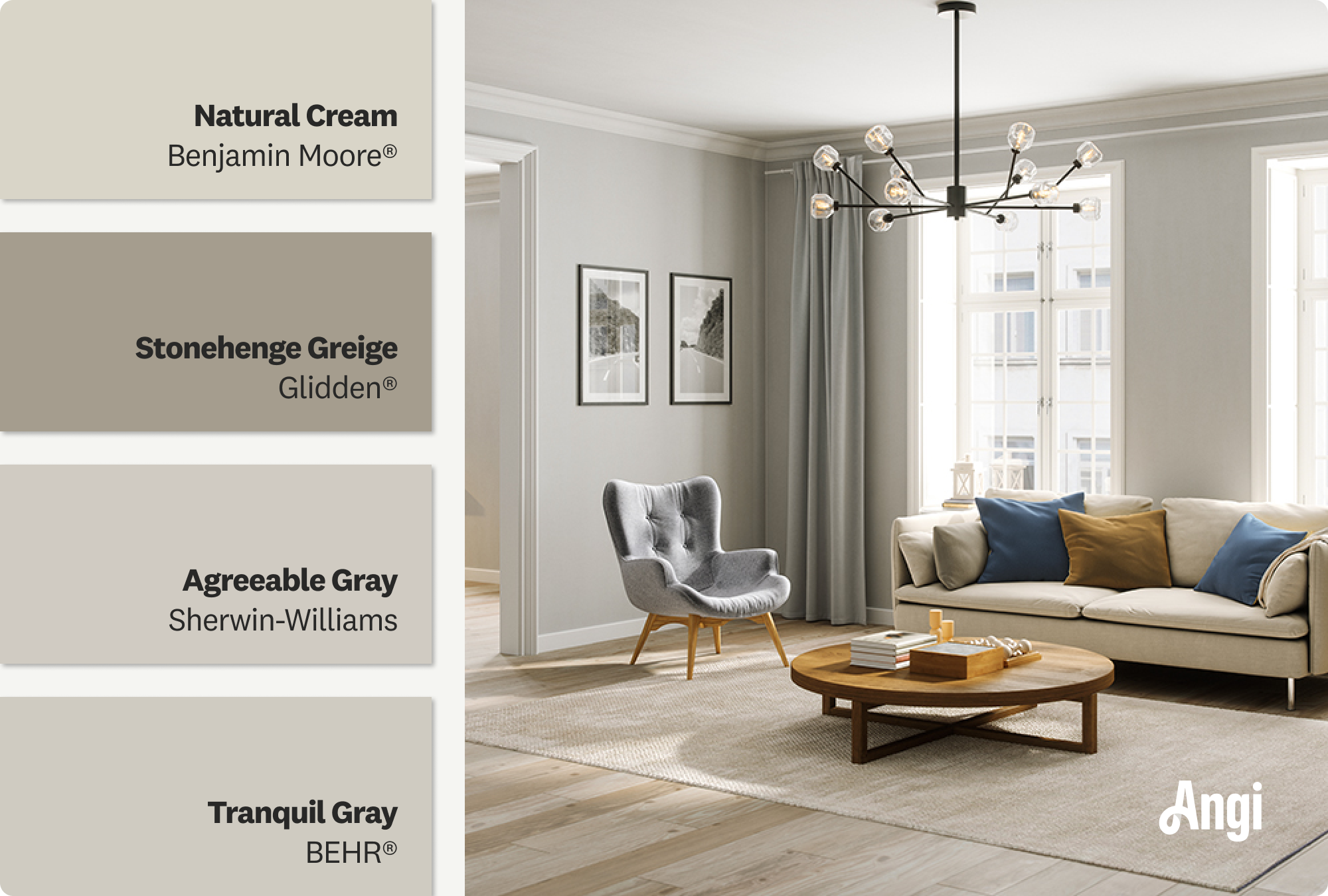
There are lots of reasons why greige is all the rage. It’s a neutral color that leaves you plenty of room to customize with varying decor, it’s light enough to reflect some natural sunlight and brighten up a space, and it adds a little more depth to a space than a neutral off-white. Dress it up with pops of color or keep things feeling natural and airy by coupling with live plants and natural fibers.
Greige is a great color option if you’re going with interior walls, as it’s casual enough not to feel overwhelming, but it’s still very much in style. You can always hire a local interior painter to help you choose a greige that’s in style but still reflects your personality and matches your decor preferences.
For inspiration:
Benjamin MooreⓇ Natural Cream
GliddenⓇ Stonehenge Greige
Sherwin-WilliamsⓇ Agreeable Gray
BEHRⓇ Tranquil Gray

It’s probably no surprise that neutral options are some of the most popular paint colors because they provide a fresh, clean feeling without being overbearing. Off-whites nail that aesthetic perfectly. They can offer feelings of rejuvenation and cleanliness while also brightening up your space. Since they reflect more light than greige, they’re better suited for rooms that don’t see a lot of natural light.
Don’t be mistaken: off-whites don’t have to be dull and lifeless. Choose your undertone carefully to customize your walls. Go with cool undertones like blues and greens to add some energy to your space, or choose warmer undertones like reds and yellows for a more inviting, relaxing living area.
For inspiration:
Benjamin MooreⓇ Swiss Coffee
GliddenⓇ Seed Pearl
Sherwin-WilliamsⓇ Gypsum
BEHRⓇ Vibrant White
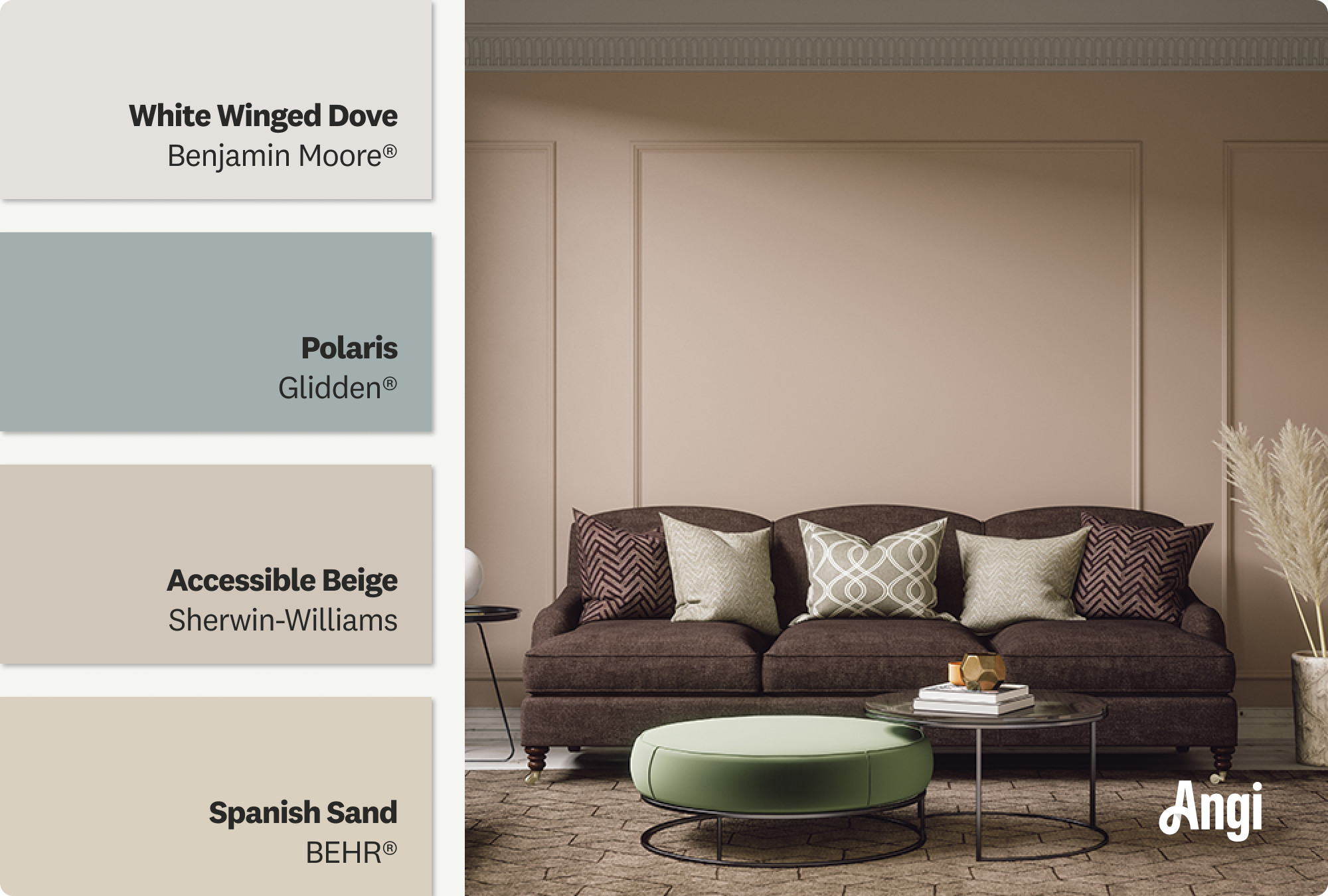
Neutrals seem to be the way to go if you’re looking for popular paint colors, so bring some earthy tones into your space with beiges, flat grays, and gray-greens. Neutrals never go out of style, so if you’re looking for longevity, stick with one of these colors and add some personality with furniture and decor instead.
Remember that painting can increase your property value, and going with a neutral color that’s unlikely to clash with anyone’s personal style is a good way to maximize your return on investment.
For inspiration:
Benjamin MooreⓇ White Winged Dove
GliddenⓇ Polaris
Sherwin-WilliamsⓇ Accessible Beige
BEHRⓇ Spanish Sand
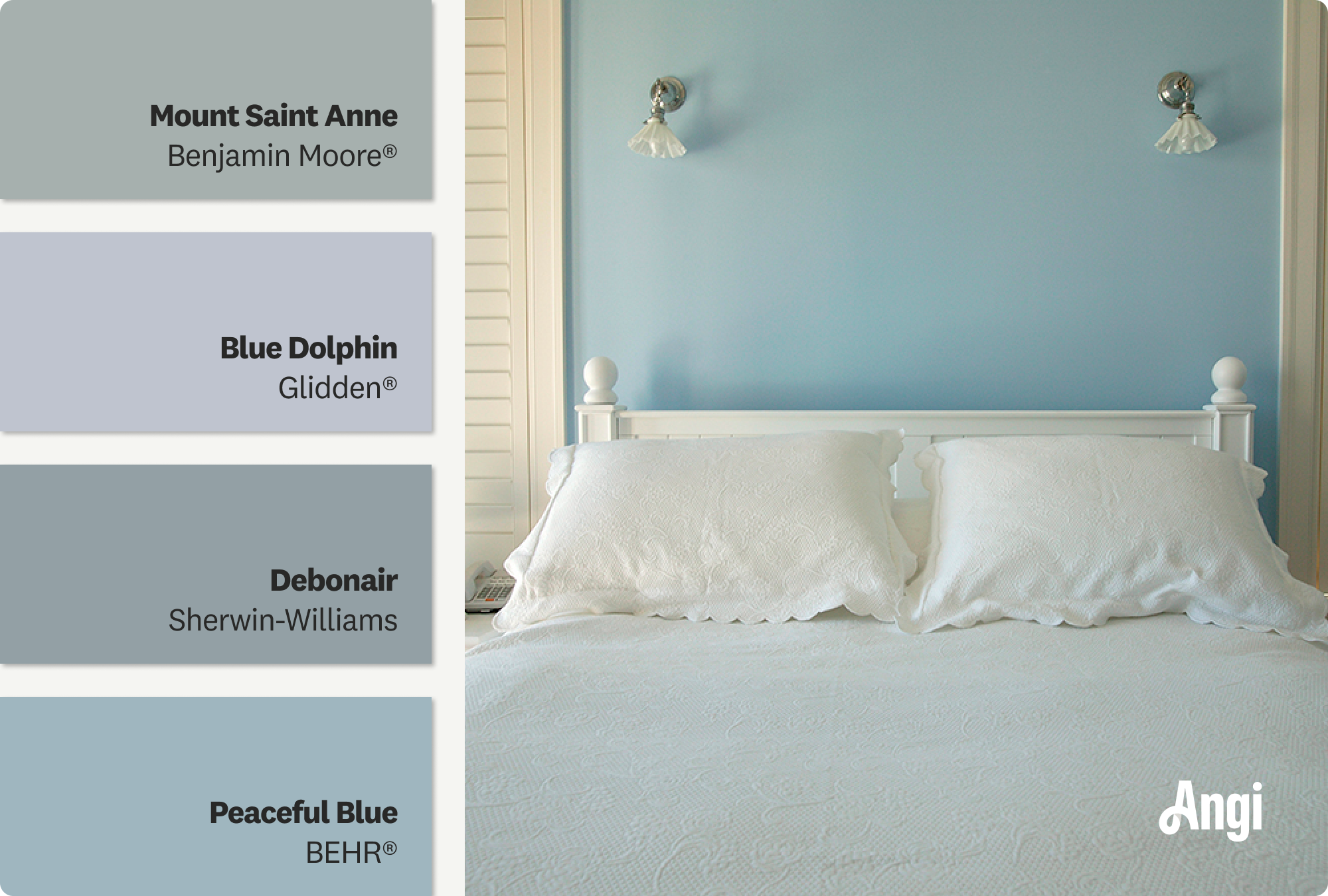
If you’re looking to stray away from neutral colors, medium-tone blues are a great way to go a bit bolder without the color becoming overwhelming. Medium-tone blues evoke a sense of airiness and relaxing energy, especially when you couple them with white trim, furniture, and decor.
For inspiration:
Benjamin MooreⓇ Mount Saint Anne
GliddenⓇ Blue Dolphin
Sherwin-WilliamsⓇ Debonair
BEHRⓇ Peaceful Blue
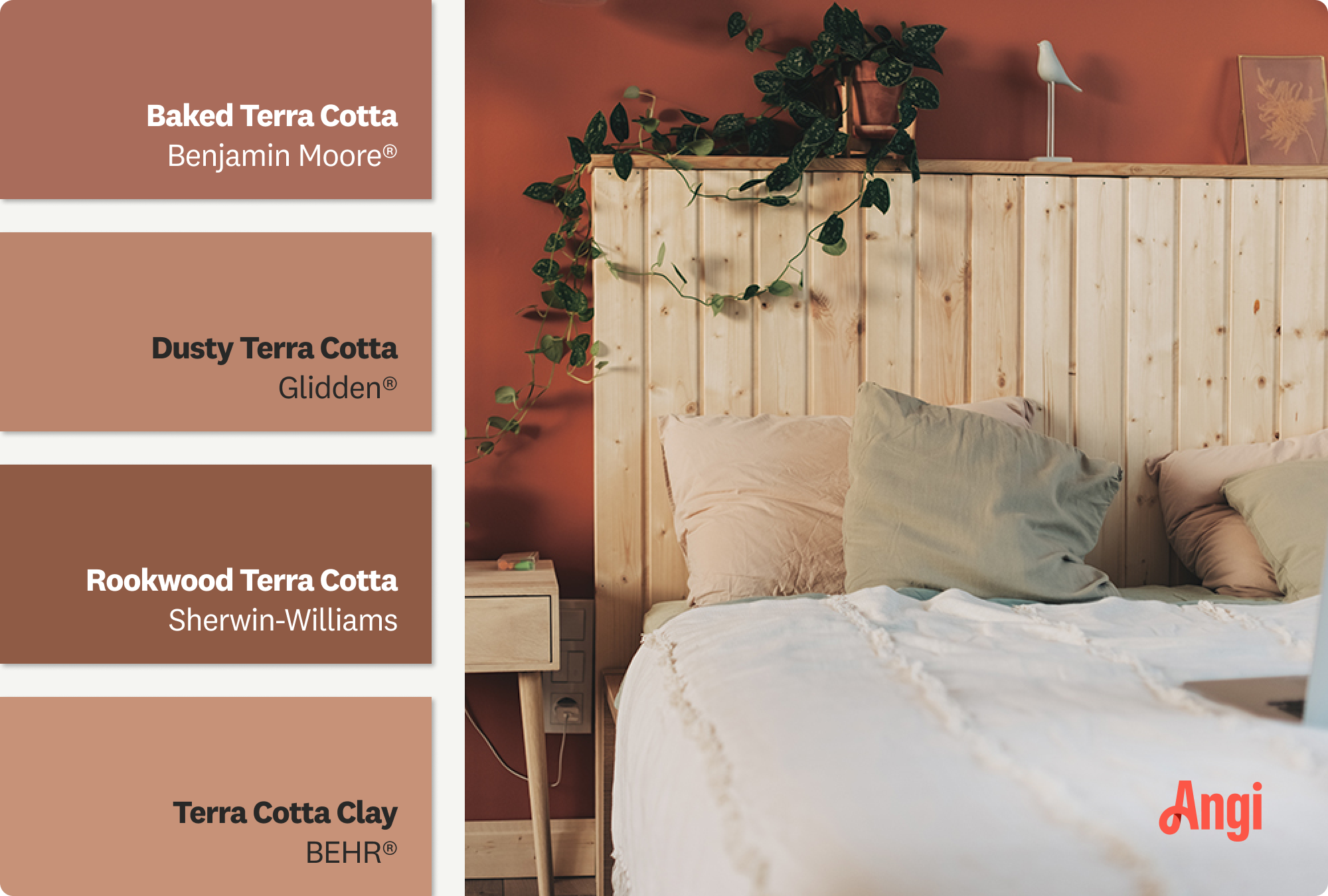
Terra Cotta evokes a sense of nature, too, but in a different way than medium-tone blues. Color psychology suggests that this color will help make you feel grounded in your space, making it a calming paint color that never goes out of style. It’s especially effective at creating calmness and tranquility in your space if it meshes well as a part of your whole-house color palette.
Terra Cotta is a bit bolder than the lighter neutral beiges, and it can make spaces that don’t get a lot of natural light feel smaller and darker. If cozy is your thing, feel free to paint all your walls terra cotta. If your room already feels small and dark, consider using this on an accent wall and pairing it with lighter earth tones.
For inspiration:
Benjamin MooreⓇ Baked Terra Cotta
GliddenⓇ Dusty Terra Cotta
Sherwin-WilliamsⓇ Rookwood Terra Cotta
BEHRⓇ Terra Cotta Clay
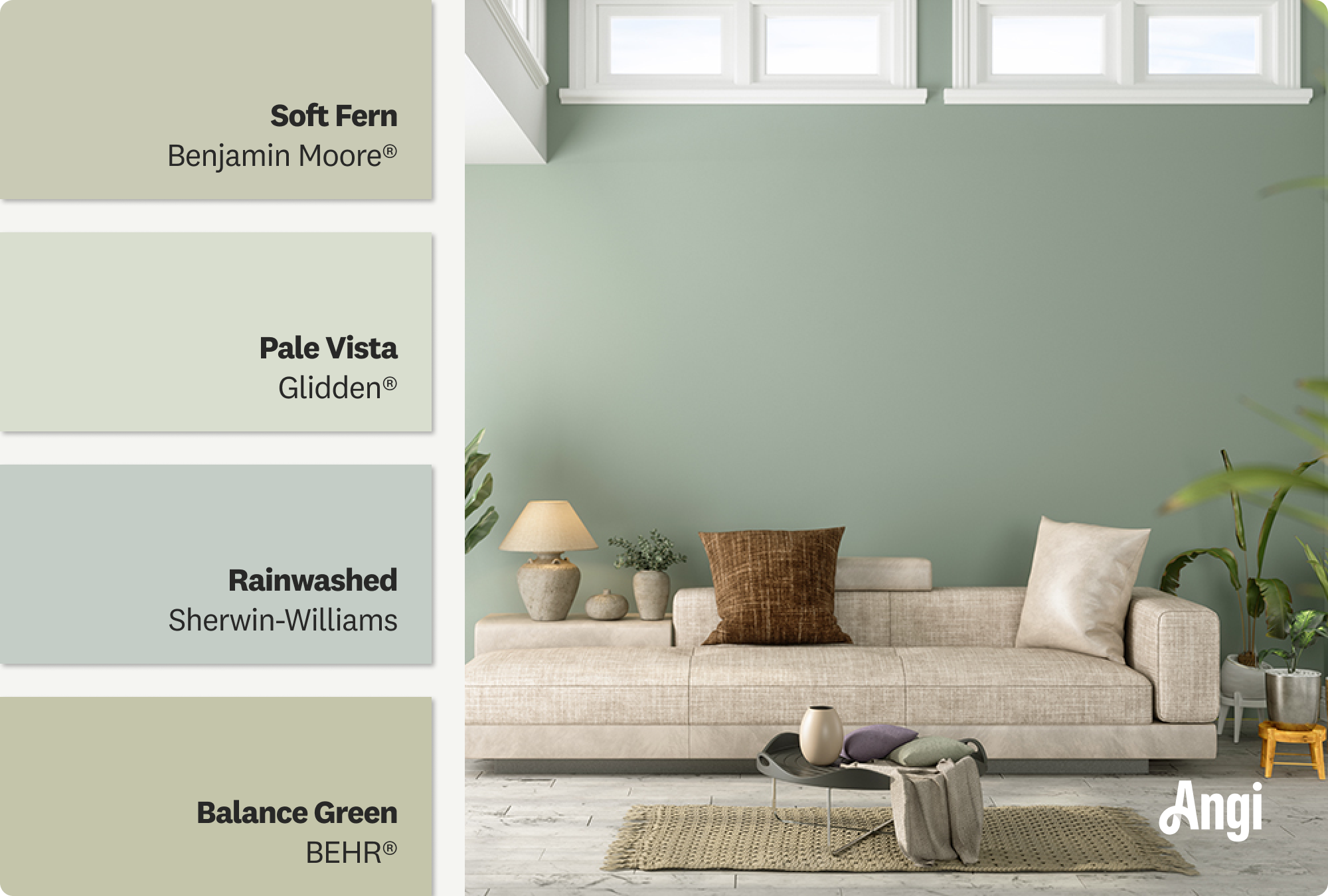
Pale greens are similar to medium-tone blues in that they can help bring the outdoors inside, but they can also invoke a sense of exploration and imagination, making them good choices for offices or workspaces.
Pale greens can make your room feel open and airy if you paint your trim white, or you can amp up the feeling of nature by choosing a dark wood trim. Keep your decor simple and nature-inspired to maximize the calming effect of your pale greens.
For inspiration:
Benjamin MooreⓇ Soft Fern
GliddenⓇ Pale Vista
Sherwin-WilliamsⓇ Rainwashed
BEHRⓇ Balance Green
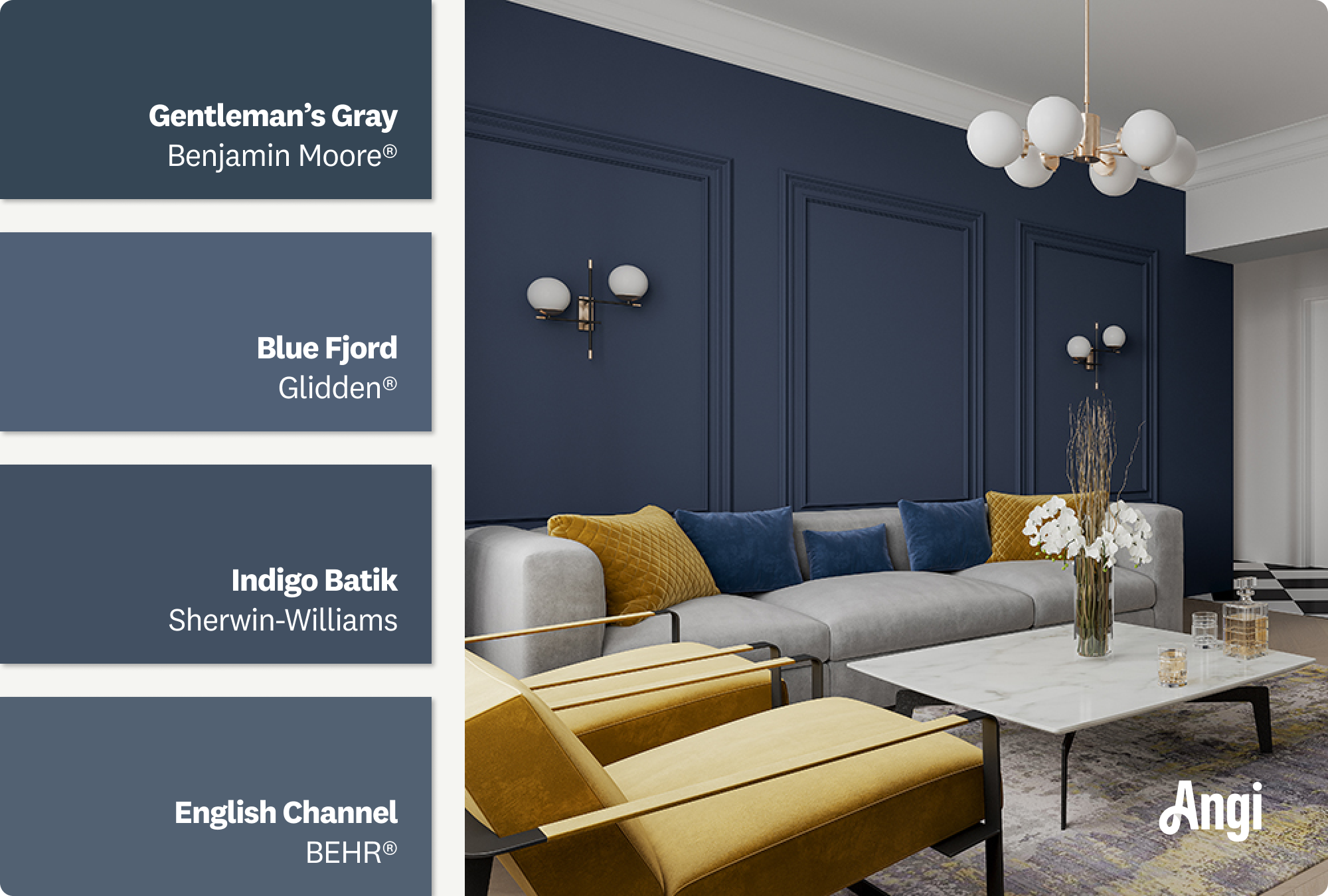
Dark blues are super trendy interior paint colors. They can really make light-colored trim pop, and they pair beautifully with live plants and light-colored decor. They can still give you the feeling of nature in your living space, but they add more moodiness and depth to a room than lighter blues and greens.
Dark blues are best in rooms that see lots of natural light, as they can quickly make a room feel too dark. They’re especially popular in bedrooms, where you may want a bit of darkness in the mornings to sleep in.
For inspiration:
Benjamin MooreⓇ Gentleman’s Gray
GliddenⓇ Blue Fjord
Sherwin-WilliamsⓇ Indigo Batik
BEHRⓇ English Channel
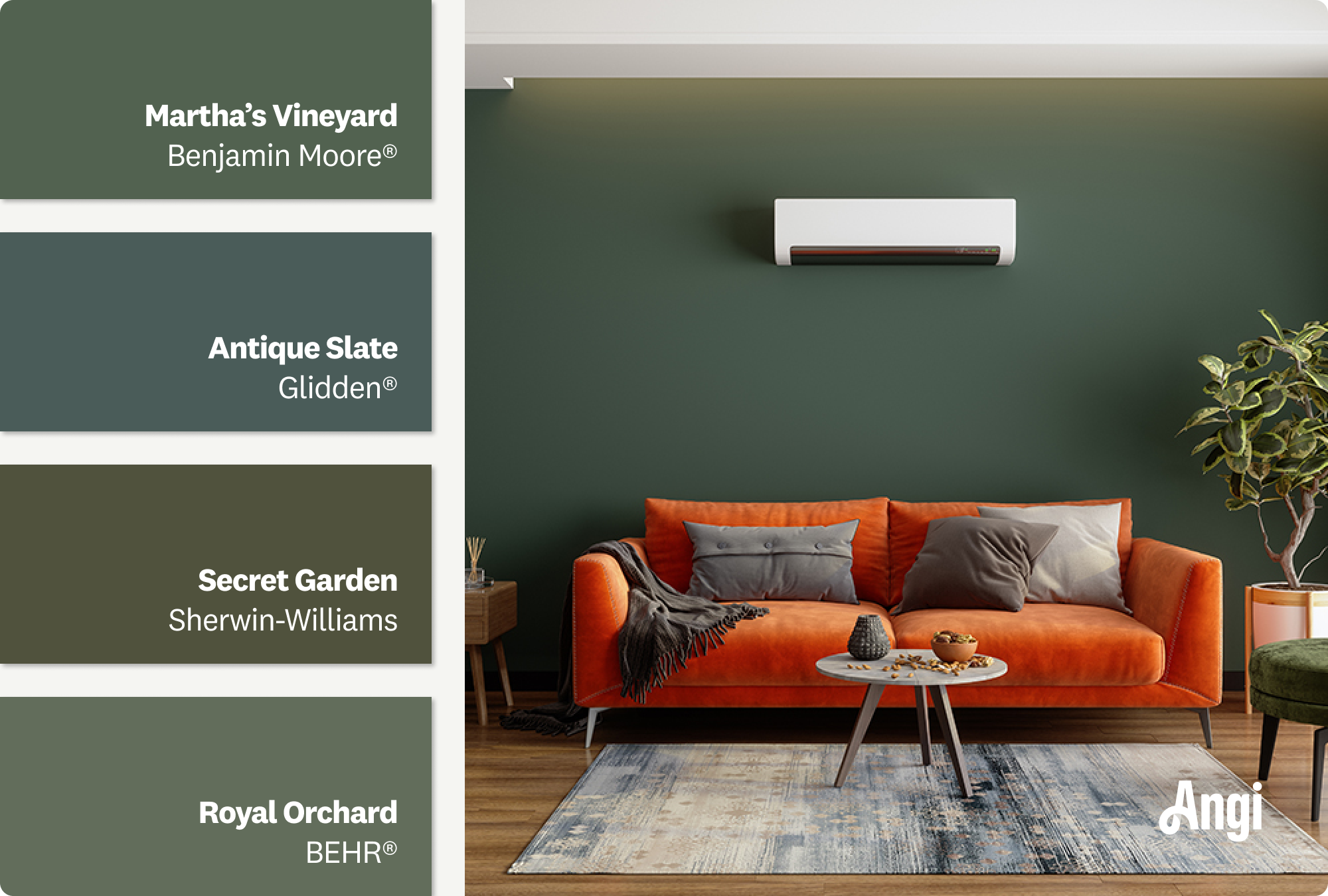
Deep greens provide a similar feel to dark blues, creating a sense of nature and relaxation in any space. They tend to inspire creativity, making them ideal for offices. They also pair well with light-colored trim and interior doors, and any live plants or natural wood furniture or decor will elevate your space even more.
Much like dark blues, deep greens are ideal in rooms that get some natural light to prevent the space from feeling too dark and closed-off. You can also use deep greens on accent walls, furniture, or mantels to add a relaxing and inspiring color without going too bold.
For inspiration:
Benjamin MooreⓇ Martha’s Vineyard
GliddenⓇ Antique Slate
Sherwin-WilliamsⓇ Secret Garden
BEHRⓇ Royal Orchard
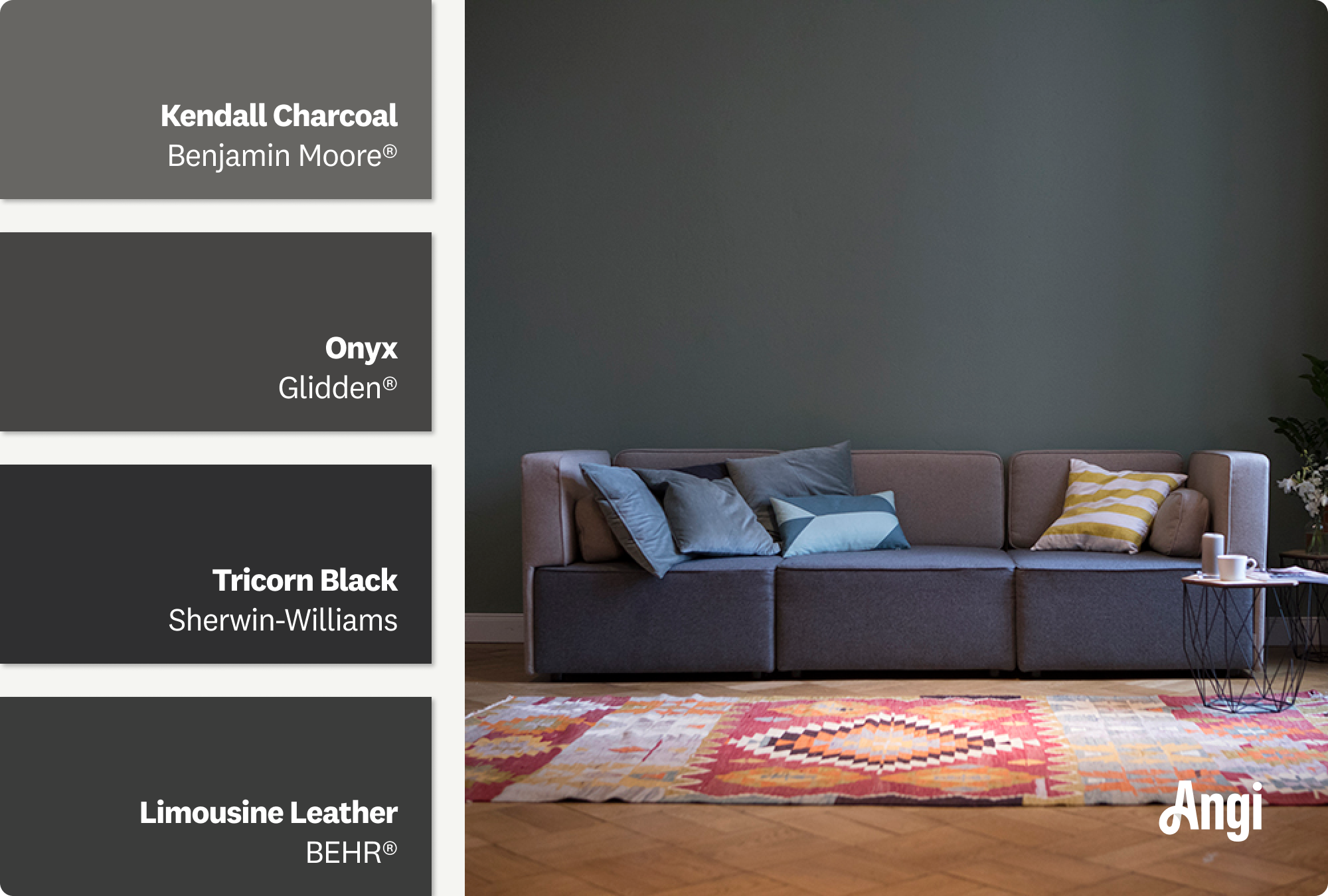
Wrapping up our list of popular paint colors is the most bold of the bunch: soft blacks. Going this route will absolutely darken your space, so avoid using it in cramped hallways and basements and save it for sun-filled bedrooms or offices. Soft black paints make light-colored wood trim stand out beautifully, adding elegance and depth to your room. They also make pallet walls and other natural accents stand out and take center stage.
Soft black paints can also work on accent walls or in alcoves if painting the entire room seems too overwhelming.
For inspiration:
Benjamin MooreⓇ Kendall Charcoal
GliddenⓇ Onyx
Sherwin-WilliamsⓇ Tricorn Black
BEHRⓇ Limousine Leather
Once you’ve decided on paint colors, you’re probably eager to get started on an interior painting project. According to Angi data on homeowners ready to paint up to five rooms, 45% want to complete the project within two weeks. About 22% of homeowners are still in the planning and budgeting stages, meaning they’ll need some help from a pro before finalizing any decisions.
With so many options for painting the interior of your home, it can be difficult to choose one. While the decision will ultimately come down to your personal preference, there are still a few ways to help you make the best selection:
Decor in the Room: If the room is already decorated with furniture and accents, you need to consider what color pairs best. You don’t want everything to be the same color—instead, it should feel complementary.
Purpose and Mood: The color you choose for a powder room is going to be different than what you want for your bedroom. Brighter or bolder colors make sense for rooms where you want a more energetic feel, as opposed to a bedroom where you want a calmer mood.
Size of the Room: Painting small rooms with dark shades will just make the room feel even smaller. For any room that already feels tight on space, stick to lighter colors.
Light Reflection: Always test out paint swatches in both natural and artificial light because you will notice a difference. Adjust the shade accordingly, and remember that painters will put on two coats of paint, so the color may be slightly darker.
I know David Vaughn ( the owner ) personally and knew that he would be very thorough in his inspection of a house I was interested in purchasing. He was exactly that and I will hire him for the next house I need an Inspection for.. Very professional and on time.
I couldn't have been more pleased with the work performed by ACR Group. Jim, his brother Michael and crew were fantastic! They did a great job. The debris from the repairs and cleaning of the gutters was nowhere to be seen. Every day the site was as clean as when they arrived and the final...
Raul and his father painted my home, and their work was excellent beyond words. They were meticulously neat, covering surfaces carefully and putting up a dust barrier around where they would be painting. They prepped the surfaces carefully and did a really tight, beautiful paint job. I had...
They successfully installed a new, energy efficient water heater. They were very responsive in answering all my questions and scheduling the time to replace the heater. I live in an older condo building downtown and the heater was very difficult to install due to tight quarters, but they did...
I am very satisfied. It was difficult to get the radius wood pieces needed for the window. They were great calling me to let me know that I had not been forgotten. They ultimately did get what was needed and replaced the piece. Then they buttoned up the whole thing with caulk and paint.
Blanco painting is professional, Did a great paint job on my condo. Meticulous and thorough, cleaned up every day.
From average costs to expert advice, get all the answers you need to get your job done.

The cost to paint the interior of a house in Chicago, IL depends on size, layout, type of surface, and more. Learn what factors can influence your total in this guide.

The cost to paint the interior of a house in San Francisco, CA depends on size, layout, type of surface, and more. Learn what factors can influence your total in this guide.

The cost to paint the interior of a house in Kansas City, MO depends on size, layout, type of surface, and more. Learn what factors can influence your total in this guide.

Knowing what type of paint is ideal for your project will give you the best results. Learn about different types of paint and what to use them for.

Is it time to give your home a little makeover? Start with the stairs. Here's how to refinish stair railings and refresh your interior.

When selecting the best paint for garage walls and ceilings, consider aesthetics, durability, ease of cleaning, and conditions in the space.